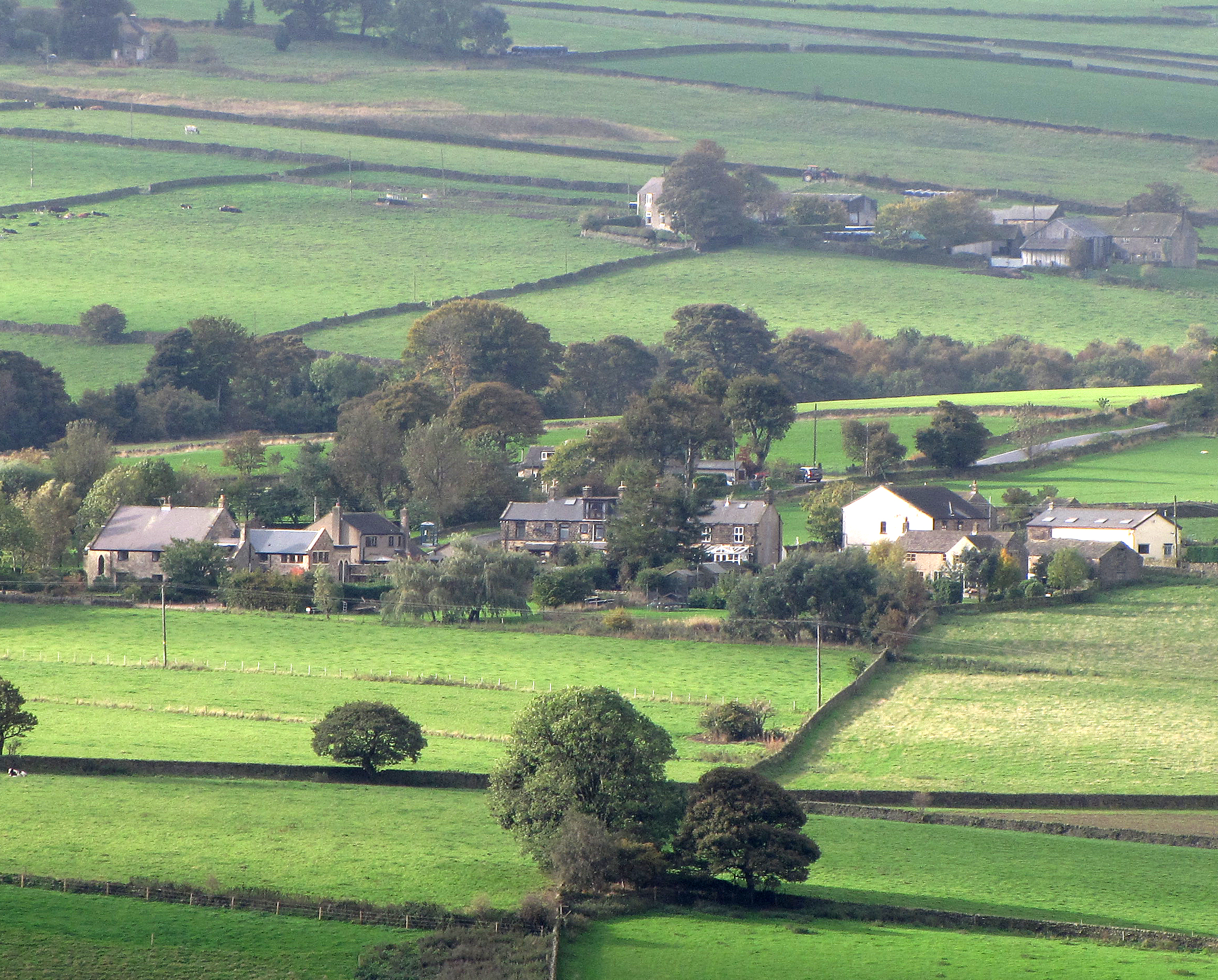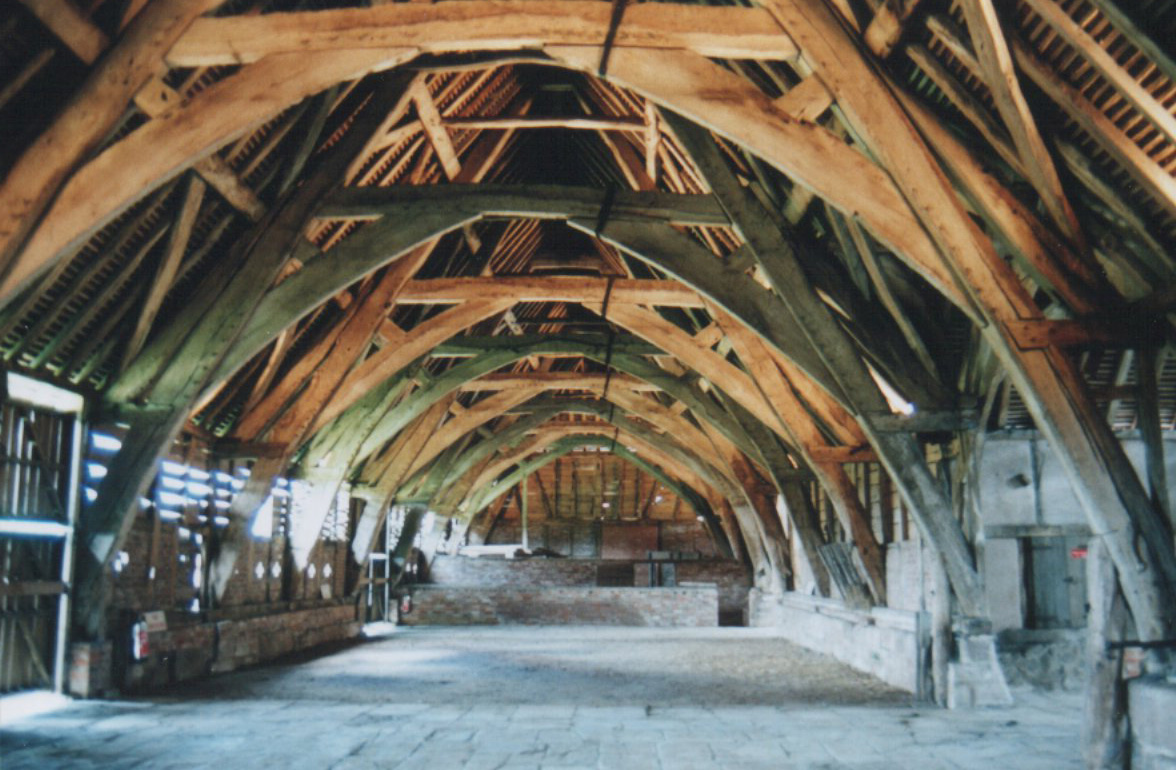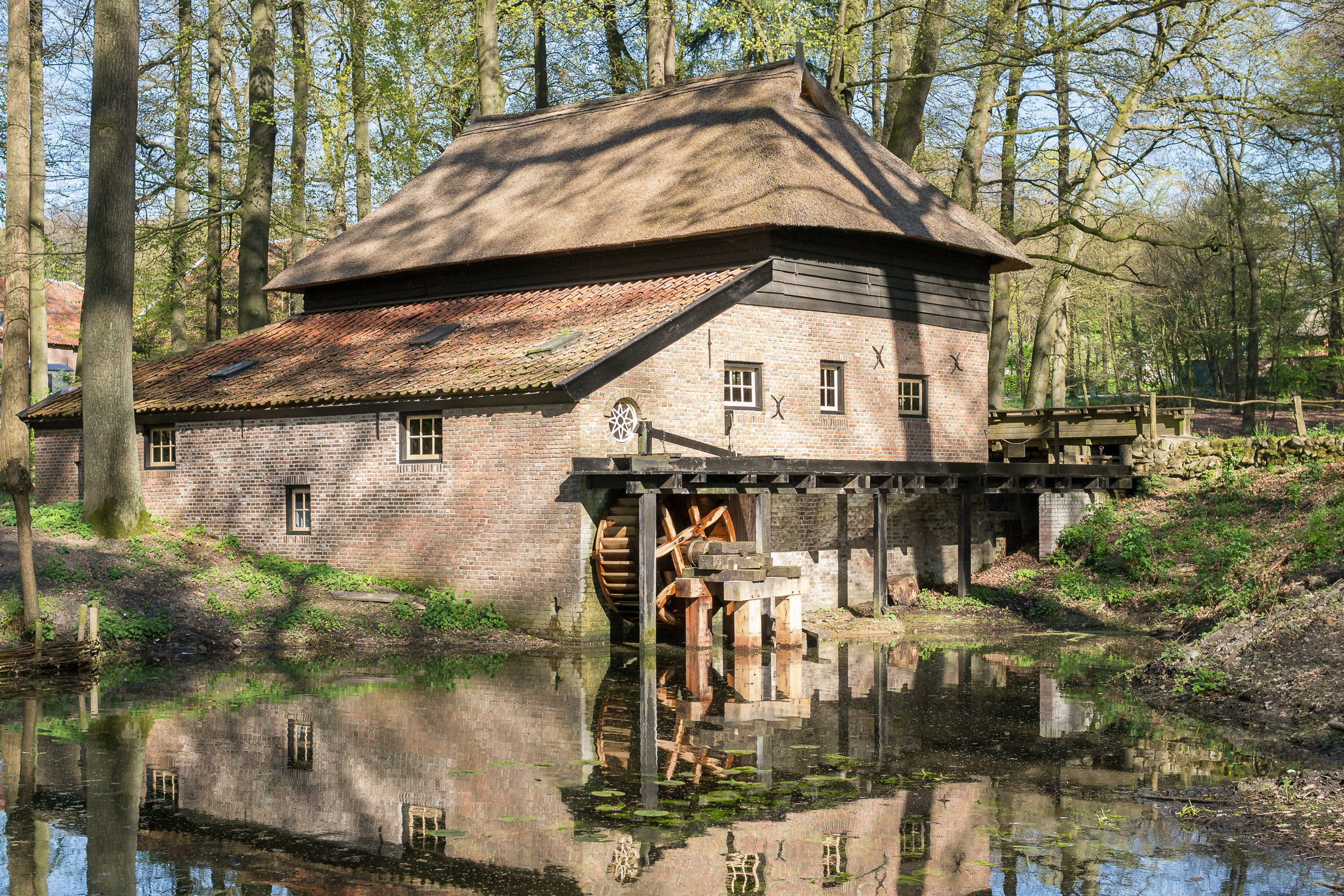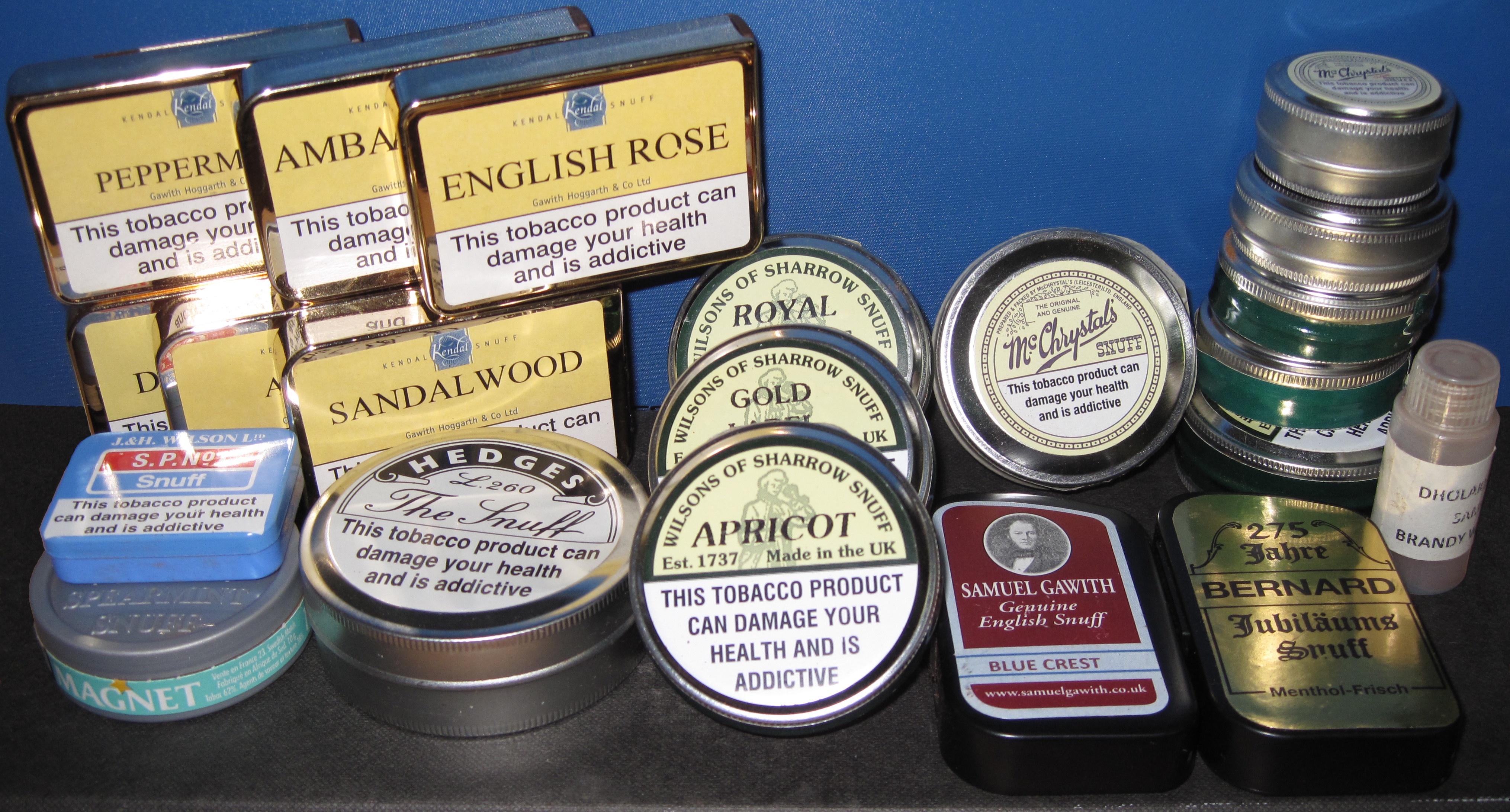|
Storrs, South Yorkshire
Storrs is a hamlet within the boundaries of the City of Sheffield in England, it is situated 6.5 km (4 miles) west-northwest of the city centre. Storrs is located between the suburb of Stannington and the village of Dungworth in the civil parish of Bradfield at a height of 210 metres above sea level between the Loxley and Rivelin valleys. Although historically a farming settlement, water-powered milling on the Storrs Brook and small scale cutlery making has also taken place in the hamlet. History The name Storrs is a derivation of the Old Norse word “Storth” which means a wooded place and is commonly found in the names of Viking settlements set up in woodland clearings. One of the first written references to the hamlet was in 1288 when the ancient Hallamshire family of Shaw first became established after Ralph del Shagh became a tenant at a local farm, the surname continued at the same farm for the next four centuries. There was another reference in 1323 when Wil ... [...More Info...] [...Related Items...] OR: [Wikipedia] [Google] [Baidu] |
City Of Sheffield
The City of Sheffield is a city and metropolitan borough in South Yorkshire, England. The metropolitan borough includes the administrative centre of Sheffield, the town of Stocksbridge and larger village of Chapeltown and part of the Peak District. It has a population of 584,853 (mid-2019 est), making it technically the third largest city in England by population behind Birmingham and Leeds, since London is not considered a single entity. It is governed by Sheffield City Council. The current city boundaries were set on 1 April 1974 by the provisions of the Local Government Act 1972, as part a reform of local government in England. The city is a merger of two former local government districts; the unitary City and County Borough of Sheffield combined with the urban district of Stocksbridge and parts of the rural district of Wortley from the West Riding of Yorkshire. For its first 12 years the city had a two-tier system of local government; Sheffield City Council shar ... [...More Info...] [...Related Items...] OR: [Wikipedia] [Google] [Baidu] |
Hallamshire
Hallamshire (or Hallam) is the historical name for an area of South Yorkshire, England, approximating to the current City of Sheffield local government area. The origin of the name is uncertain. The English Place-Name Society describe "Hallam" originating from a formation meaning "on the rocks". Alternative theories are that it is derived from ''halgh'' meaning an area of land at a border,David Hey, ''Historic Hallamshire'' Old Norse ''hallr'' meaning a slope or hill, or Old English ''heall'' meaning a hall or mansion. The exact boundaries of this historic district are unknown, but it is thought to have covered the parishes of Sheffield, Ecclesfield, and Bradfield—an area roughly equivalent to those parts of the present-day borough of the City of Sheffield that lie to the west of the rivers Don and Sheaf that are within the boundaries of the ancient county of Yorkshire (later descriptions also include Brightside and the parish of Handsworth).See chapter I of Hunter ... [...More Info...] [...Related Items...] OR: [Wikipedia] [Google] [Baidu] |
Cattery
A cattery means any building, collection of buildings or property in which cats are housed, maintained, and in some cases bred. A cattery can be anything from a state-of-the-art facility with CCTV, televisions and water features to a building attached to a family dwelling, in less reputable establishments they can also be a shed or garage or a collection of free-standing structures made of wood and wire mesh, with some form of roofing, often corrugated iron, similar to an aviary. Boarding Cattery This is a place where cats are housed temporarily for a fee. Although many people worry about the stress placed on the animal by being put in an unfamiliar environment, most boarding catteries work to reduce stress. Boarding catteries typically have familiar objects, cat trees, climbing frames, scratching posts, and places for the cats to sleep during the day, and blankets and toys from home, are also permitted at many catteries. Some catteries offer onsite grooming and nail trimming. ... [...More Info...] [...Related Items...] OR: [Wikipedia] [Google] [Baidu] |
Sunday School
A Sunday school is an educational institution, usually (but not always) Christian in character. Other religions including Buddhism, Islam, and Judaism have also organised Sunday schools in their temples and mosques, particularly in the West. Sunday school classes usually precede a Sunday church service and are used to provide catechesis to Christians, especially children and teenagers, and sometimes adults as well. Churches of many Christian denominations have classrooms attached to the church used for this purpose. Many Sunday school classes operate on a set curriculum, with some teaching attendees a catechism. Members often receive certificates and awards for participation, as well as attendance. Sunday school classes may provide a light breakfast. On days when Holy Communion is being celebrated, however, some Christian denominations encourage fasting before receiving the Eucharistic elements. Early history Sunday schools were first set up in the 18th century in England to pr ... [...More Info...] [...Related Items...] OR: [Wikipedia] [Google] [Baidu] |
Listed Building
In the United Kingdom, a listed building or listed structure is one that has been placed on one of the four statutory lists maintained by Historic England in England, Historic Environment Scotland in Scotland, in Wales, and the Northern Ireland Environment Agency in Northern Ireland. The term has also been used in the Republic of Ireland, where buildings are protected under the Planning and Development Act 2000. The statutory term in Ireland is " protected structure". A listed building may not be demolished, extended, or altered without special permission from the local planning authority, which typically consults the relevant central government agency, particularly for significant alterations to the more notable listed buildings. In England and Wales, a national amenity society must be notified of any work to a listed building which involves any element of demolition. Exemption from secular listed building control is provided for some buildings in current use for worship, ... [...More Info...] [...Related Items...] OR: [Wikipedia] [Google] [Baidu] |
Cruck
A cruck or crook frame is a curved timber, one of a pair, which support the roof of a building, historically used in England and Wales. This type of timber framing consists of long, generally naturally curved, timber members that lean inwards and form the ridge of the roof. These posts are then generally secured by a horizontal beam which then forms an "A" shape. Several of these "crooks" are constructed on the ground and then lifted into position. They are then joined together by either solid walls or cross beams which aid in preventing 'racking' (the action of each individual frame going out of square with the rest of the frame, and thus risking collapse). Etymology The term ''crook'' or ''cruck'' comes from Middle English ', from Old Norse ', meaning "hook". This is also the origin of the word "crooked", meaning bent, twisted or deformed, and also the crook used by shepherds and symbolically by bishops. Use Crucks were chiefly used in the medieval period for structures such ... [...More Info...] [...Related Items...] OR: [Wikipedia] [Google] [Baidu] |
Great Sheffield Flood
The Great Sheffield Flood was a flood that devastated parts of Sheffield, England, on 11 March 1864, when the Dale Dyke Dam broke as its reservoir was being filled for the first time. At least 240 people died and more than 600 houses were damaged or destroyed by the flood. The immediate cause was a crack in the embankment, the cause of which was never determined. The dam's failure led to reforms in engineering practice, setting standards on specifics that needed to be met when constructing such large-scale structures. The dam was rebuilt in 1875. Dale Dyke Dam Sheffield is a city and subdivision of South Yorkshire, England. As the town industrialised, its population grew from 45,478 in 1801 to 185,157 in 1861. This rapid population growth resulted in greatly increased demand for water, which led to the construction of the Dale Dyke Dam for the purpose of providing a more efficient source of clean water. It was created by the Sheffield Waterworks Company (SWWC). During the ... [...More Info...] [...Related Items...] OR: [Wikipedia] [Google] [Baidu] |
Cutlery
Cutlery (also referred to as silverware, flatware, or tableware), includes any hand implement used in preparing, serving, and especially eating food in Western culture. A person who makes or sells cutlery is called a cutler. The city of Sheffield in England has been famous for the production of cutlery since the 17th century and a train – the ''Master Cutler'' – running from Sheffield to London was named after the industry. Bringing affordable cutlery to the masses, stainless steel was developed in Sheffield in the early 20th century. The major items of cutlery in Western culture are the knife, fork and spoon. These three implements first appeared together on tables in Britain in the Georgian era. In recent times, hybrid versions of cutlery have been made combining the functionality of different eating implements, including the spork (''sp''oon / f''ork''), spife (''sp''oon / kn''ife''), and knork (''kn''ife / f''ork''). The sporf or splade combines all three. Etymology ... [...More Info...] [...Related Items...] OR: [Wikipedia] [Google] [Baidu] |
Paper Mill
A paper mill is a factory devoted to making paper from vegetable fibres such as wood pulp, old rags, and other ingredients. Prior to the invention and adoption of the Fourdrinier machine and other types of paper machine that use an endless belt, all paper in a paper mill was made by hand, one sheet at a time, by specialized laborers. History Historical investigations into the origin of the paper mill are complicated by differing definitions and loose terminology from modern authors: Many modern scholars use the term to refer indiscriminately to all kinds of mills, whether powered by humans, by animals or by water. Their propensity to refer to any ancient paper manufacturing center as a "mill", without further specifying its exact power source, has increased the difficulty of identifying the particularly efficient and historically important water-powered type. Human and animal-powered mills The use of human and animal powered mills was known to Muslim and Chinese paperma ... [...More Info...] [...Related Items...] OR: [Wikipedia] [Google] [Baidu] |
Snuff (tobacco)
Snuff is a smokeless tobacco made from finely ground or pulverized tobacco leaves. The Old Snuff House of Fribourg & Treyer at the Sign of the Rasp & Crown, No.34 James's Haymarket, London, S.W., 1720, 1920. Author: George Evens and Fribourg & Treyer. Publisher: Nabu Press, London, England. Reproduced 5 August 2010, It is inhaled or "sniffed" (alternatively sometimes written as "snuffed") into the nasal cavity, delivering a swift hit of nicotine and a lasting flavored scent (especially if flavoring has been blended with the tobacco). Traditionally, it is sniffed or inhaled lightly after a pinch of snuff is either placed onto the back surface of the hand, held pinched between thumb and index finger, or held by a specially made "snuffing" device. Snuff originated in the Americas and was in common use in Europe by the 17th century. Traditional snuff production consists of a lengthy, multi-step process, in tobacco snuff mills. The selected tobacco leaves are first subject to spe ... [...More Info...] [...Related Items...] OR: [Wikipedia] [Google] [Baidu] |
Drift Mine
Drift mining is either the mining of an ore deposit by underground methods, or the working of coal seams accessed by adits driven into the surface outcrop of the coal bed. A drift mine is an underground mine in which the entry or access is above water level and generally on the slope of a hill, driven horizontally into the ore seam. Random House dictionary says the origin of the term "drift mine" is an Americanism, circa 1885–1890. Drift is a more general mining term, meaning a near-horizontal passageway in a mine, following the bed (of coal, for instance) or vein of ore. A drift may or may not intersect the ground surface. A drift follows the vein, as distinguished from a crosscut that intersects it, or a level or gallery, which may do either. All horizontal or subhorizontal development openings made in a mine have the generic name of drift. These are simply tunnels made in the rock, with a size and shape depending on their use—for example, haulage, ventilation, or exp ... [...More Info...] [...Related Items...] OR: [Wikipedia] [Google] [Baidu] |
Ganister
A ganister (or sometimes gannister ) is hard, fine-grained quartzose sandstone, or orthoquartzite,Jackson, J. A., 1997, ''Glossary of geology'', 4th ed. American Geological Institute, Alexandria. used in the manufacture of silica brick typically used to line furnaces. Ganisters are cemented with secondary silica and typically have a characteristic splintery fracture. Cornish miners originally coined this term for hard, chemically and physically inert silica-cemented quartzose sandstones, commonly, but not always found as seatearths within English Carboniferous coal measures. This term is now used for similar quartzose sandstones found typically as seatearths in the Carboniferous coal measures of Nova Scotia, the United States, and the Triassic coal-bearing strata of the Sydney Basin in Australia.Retallack, G. J., 1977. Triassic palaeosols in the upper Narrabeen Group of New South Wales. Part II: Classification and reconstruction '' Journal of the Geological Society of Australia'' ... [...More Info...] [...Related Items...] OR: [Wikipedia] [Google] [Baidu] |











